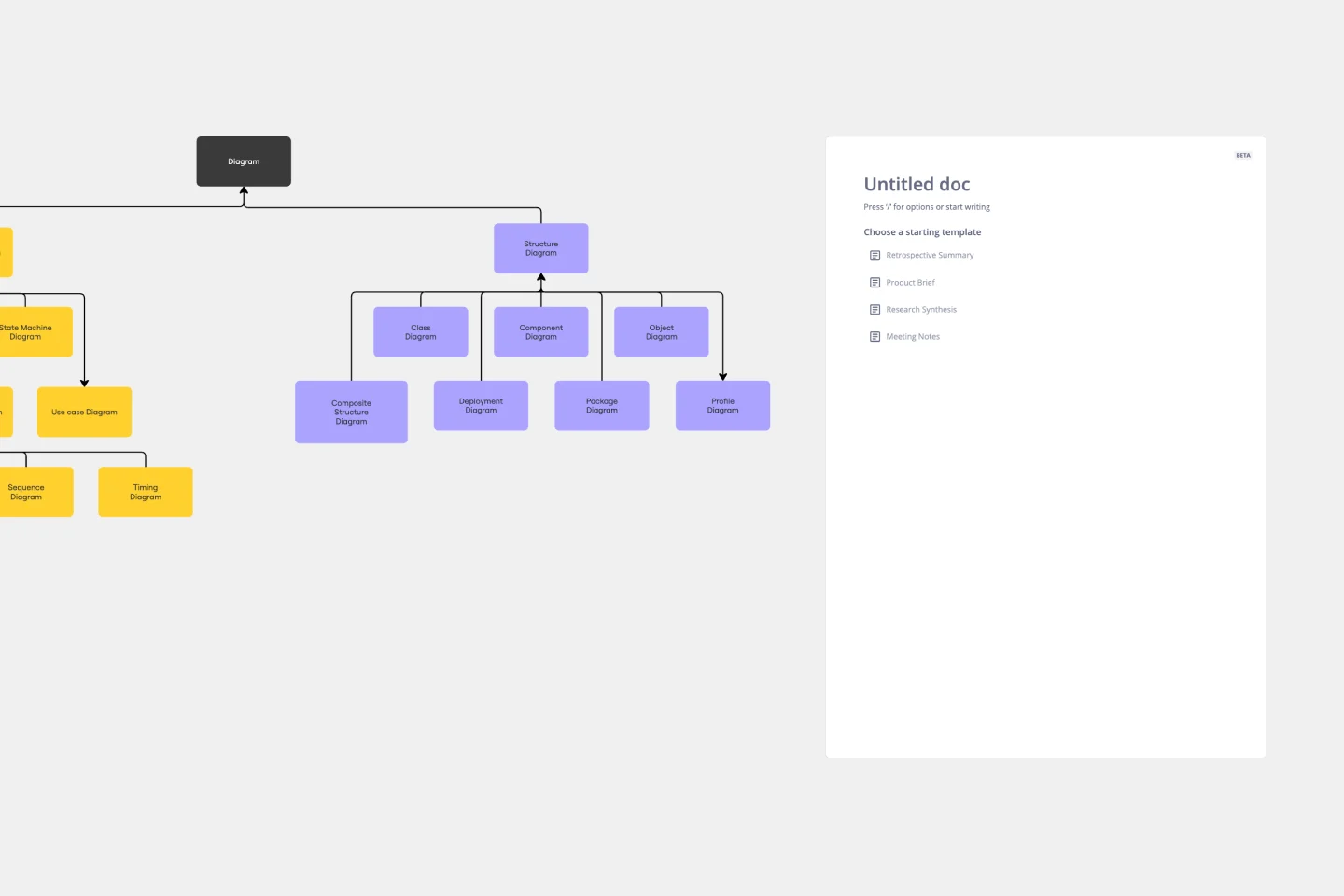About the UML Class E-Commerce System Template
The UML Class E-Commerce System Template is designed to help software engineers and system architects visualize the class structure of an online shop. This template provides a detailed representation of the system's classes or objects, their attributes, methods, and the relationships among them. It effectively illustrates how features like product listings, inventory, shopping carts, orders, payments, and shipping details interact during an online sales transaction. By offering a clear blueprint of the system's structure, this template helps in the planning and development of robust e-commerce systems.
How to use the UML Class E-Commerce System Template
Customize the template: Once the template is loaded on your board, you can start customizing it to fit your specific project needs. Miro allows you to add, delete, or modify the classes and their relationships. Use the UML shape packs available in Miro to drag and drop new elements into your diagram.
Define classes and relationships: Identify the key classes in your e-commerce system, such as Customer, Product, Order, ShoppingCart, and Payment. Use the template to define their attributes and methods. Then, establish the relationships between these classes, such as associations, aggregations, and compositions.
Collaborate and share: Invite team members to collaborate on the diagram in real time. Miro's collaborative features enable you to gather feedback, make adjustments, and finalize the system's design together. Once completed, share the board with stakeholders or export it for documentation purposes.
Why use the UML Class E-Commerce System Template
Using the UML Class E-Commerce System template in Miro has many benefits:
Efficiency: Saves time by providing a ready-made structure that can be easily customized, eliminating the need to start from scratch.
Clarity: Enhances understanding of the system's architecture, making it easier to identify potential issues or improvements early in the development process.
Collaboration: Facilitates teamwork by allowing multiple users to work on the diagram simultaneously, ensuring all perspectives are considered.
Documentation: Serves as a valuable piece of documentation that can be referenced throughout the development process and beyond.
Adaptability: The UML Class E-Commerce System template is highly adaptable to various e-commerce scenarios. Whether you're designing a small boutique online store or a comprehensive digital marketplace, this template can be tailored to meet the specific requirements of your project. This flexibility ensures that your system architecture can evolve alongside your business needs.
Precision in planning: By mapping out the class structure of your e-commerce system with precision, you can anticipate and mitigate potential challenges in the development process. This template helps in identifying redundant processes or gaps in the system architecture, allowing for a more streamlined and efficient development cycle.
Improved communication: The UML Class E-Commerce System template is an excellent communication tool. It bridges the gap between technical and non-technical stakeholders, providing a clear and understandable representation of the system architecture. This shared understanding facilitates better decision-making and alignment across teams.
Educational value: For teams new to e-commerce systems or UML, working with this template serves as a practical learning tool. It offers hands-on experience in understanding the complexities of e-commerce systems and the principles of UML, enhancing the team's skills and knowledge.
Integration and scalability: As your e-commerce platform grows, the need for integrating new features or third-party services arises. The UML Class E-Commerce System template helps in planning these integrations and scalability efforts by providing a clear overview of the system's architecture and how new components can be incorporated seamlessly.


